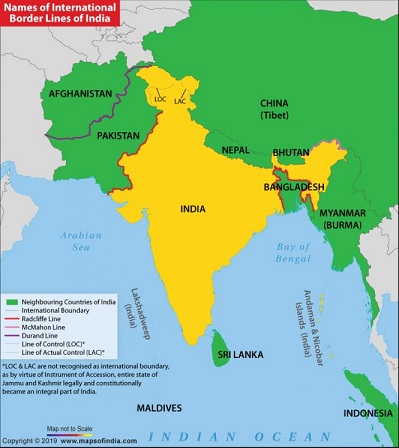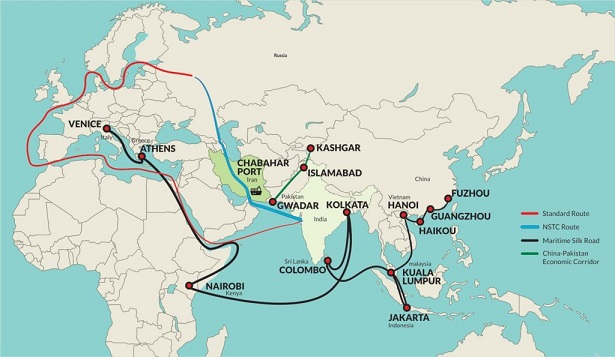Focus: GS-II International Relations
Why in news?
- Indian and Afghan officials in Delhi and Kabul discussed the outcome of the Loya Jirga, or grand assembly, in Afghanistan that advised the release of 400 Taliban militants convicted of serious crimes.
- The two sides discussed the likelihood of intra-Afghan negotiations in Doha, Qatar, as well as the hopes for a permanent ceasefire.
- The Loya Jirga has been convened after the Afghanistan President refused to release the Taliban prisoners which threatened the derailment of intra-Afghan talks.
Details
- The release was conditional, and contingent on a reduction in the level of violence by the Taliban as well as a “humanitarian ceasefire” for civilians to be transported during the coronavirus pandemic without fear of the Taliban.
- The Taliban is also required to guarantee that none of the men being released will return to combat.
- It is hoped that the release of the Taliban prisoners will include those demanded in exchange for the release of the Indian hostage.
- Talks are also on for the release of the last of the group of seven Indian hostages still held by the Taliban following their abduction in 2018.
Loya Jirga
- Loya Jirga is a mass national gathering that brings together representatives from the various ethnic, religious, and tribal communities in Afghanistan.
- It is a highly respected centuries-old consultative body that has been convened at times of national crisis or to settle national issues.
- Even though Loya Jirga is not an official decision-making body and its decisions are not legally binding, the Loya Jirga’s decision is seen as final, with the president and parliament expected to respect the ruling.
U.S.A.’s Role in Afghanistan
- The prisoner exchanges are part of the agreements signed by the USA and Taliban and the USA and Afghanistan government earlier in 2020.
- The USA government has been keen to speed up the Taliban-Afghan reconciliation process and the USA believes that the talks between the Afghanistan government and Taliban will lead to reduction of violence and direct talks, resulting in a peace agreement and an end to the war in Afghanistan.
- The USA announced to withdraw its forces and reduced their strength, after pushing for the Afghanistan government to release the Taliban prisoners, and for the Taliban to release Afghan soldiers and civilians in its custody.
Afghanistan–India relations

- Bilateral relations between Afghanistan and India have remained strong and friendly over the decades, tracing back to the Indus Valley Civilisation.
- Between the 10th century to the mid-18th century, northern India has been invaded by a number of invaders based in what today is Afghanistan. Among them were the Ghaznavids, Ghurids, Khaljis, Suris, Mughals and Durranis.
- The Republic of India was the only South Asian country to recognize the Soviet-backed Democratic Republic of Afghanistan in the 1980s.
- India-Afghanistan relations were diminished during the 1990s Afghan civil war and the Taliban government.
- India aided the overthrow of the Taliban and became the largest regional provider of humanitarian and reconstruction aid to the present day Islamic Republic of Afghanistan.
- India shares border with Pakistan and there is the Durand Line conflict between Pakistan and Afghanistan.
Concerns for India with the U.S. – Taliban Peace deal
- The U.S.-Taliban peace deal means that the Taliban, which has not let up on violent attacks on the Afghan Army, will become more potent as the U.S. withdraws soldiers from the country, and will hold more sway in the inter-Afghan process as well, as the U.S. withdraws funding for the government in Kabul.
- India’s presence inside Afghanistan, which has been painstakingly built up since 2001, is being threatened anew by terror groups such as the Islamic State Khorasan Province (ISKP), believed to be backed by Pakistan’s establishment.
- Afghanistan is a strategic investment for India, and India has made significant contributions to the rebuilding of the country. India’s assistance of more than $3 billion in projects, trade of about $1 billion, a $20 billion projected development expenditure of an alternate route through Chabahar, as well as its support to the Afghan National Army, bureaucrats, doctors and other professionals for training in India should assure it a leading position in Afghanistan’s regional formulation.
India’s terms would be revolving around:
- Taliban commitments on India’s strategic projects, and Chabahar port,
- The safety of minorities, women’s education
- Terrorism, where no Afghan soil could be used by anti-India groups.
India’s Interest in Afghanistan
- Economic and Strategic Interest: Afghanistan is a gateway to the oil and mineral-rich Central Asian republics.
- Afghanistan’s main advantage is its geography, as anyone who is in power in Afghanistan controls the land routes connecting India with Central Asia (via Afghanistan).
- Developmental Projects: The massive reconstruction plans for the country to offer a lot of opportunities for Indian companies.
- Three major projects: The Afghan Parliament, the Zaranj-Delaram Highway, and the Afghanistan-India Friendship Dam (Salma Dam), along with India’s assistance of more than $3 billion in projects, hundreds of small development projects (of schools, hospitals and water projects) have cemented India’s position in Afghanistan.
- Security Interest: India has been the victim of state-sponsored terrorism emanating from Pakistan supported terrorist group operating in the region (e,g., Haqqani network).

-Source: The Hindu




